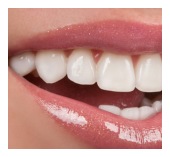
A crown (cap) is a restoration that is placed on teeth that have lost a lot of their structure. There are various types of crowns, ranging from full porcelain to full metal. Your dentist will explain the advantages and disadvantages of each kind for you.
The process of making a crown includes a number of steps, beginning with preparing and taking impressions of the tooth/teeth involved. A temporary crown or bridge is then placed on your teeth. Meanwhile, the impressions are sent to the lab where a mold of the teeth is poured and the work begins. The completed work is sent back to the office; after inspection and any necessary adjustments, it is cemented onto your teeth.
Frequently Asked Questions about Dental Crowns
Yes, teeth under crowns can still develop decay, particularly at the margin where the crown meets the tooth. This is why excellent oral hygiene and regular dental check-ups remain essential even with crowned teeth. X-rays and examinations allow us to detect any problems early before they require major treatment.
If your crown feels loose or falls off:
- Save the crown in a clean container if it has come off
- Contact our office immediately for an appointment
- Avoid chewing on that side
- If completely comfortable, you can use temporary dental cement from a pharmacy to reattach it until your appointment
- Continue gentle brushing of the affected area
Prompt attention helps prevent further damage to the underlying tooth structure.
Modern dental crowns are designed to look completely natural. For visible teeth, we use materials that mimic the translucency, color, and light-reflecting properties of natural enamel. We take care to match the shade precisely to your surrounding teeth, and the contours are custom-designed to blend seamlessly with your smile. Most people cannot distinguish a well-made crown from a natural tooth.
Depending on your specific situation, alternatives might include:
- Onlays/inlays for moderate damage (less tooth structure removal)
- Dental bonding for minor repairs
- Veneers for primarily cosmetic concerns on front teeth
- Dental implants if the tooth cannot be saved
During your consultation, we’ll discuss all appropriate options so you can make an informed decision.
Yes, crowns can be replaced when they become worn, damaged, or if you’re unhappy with their appearance. The process is similar to getting your first crown, though sometimes additional treatments may be needed if decay has developed under the old crown or the tooth structure has changed. Regular check-ups help identify when a crown may need replacement.
A crown covers the entire tooth, requiring more tooth reduction (about 1-2mm all around). A veneer covers only the front surface of a tooth and requires minimal tooth reduction (about 0.5mm from the front surface only). Crowns are typically recommended for teeth with significant damage or weakness, while veneers are primarily cosmetic enhancements for teeth that are otherwise healthy and structurally sound.
Caring for a crown is similar to caring for your natural teeth:
- Brush twice daily and floss daily, paying special attention to the crown margins where the crown meets the gum
- Avoid chewing extremely hard foods or objects (ice, hard candy, pens) that could damage the crown
- If you grind your teeth, wear a nightguard to protect your crown
- Maintain regular dental check-ups and cleanings
- Use a non-abrasive toothpaste to prevent scratching porcelain surfaces
With proper care, dental crowns can last 10-15+ years or even longer. Factors affecting longevity include:
- Your oral hygiene practices
- Whether you grind or clench your teeth
- Your bite and chewing habits
- The material of the crown
- The location of the crown in your mouth
Regular dental check-ups help ensure your crown remains in excellent condition.
The crown procedure is comfortable for most patients. We use local anesthesia during the preparation phase to ensure you don’t feel any pain. Some patients experience mild sensitivity for a few days after the procedure, particularly when the tooth has just been prepared for the crown. Any discomfort is typically mild and manageable with over-the-counter pain relievers.
Dental crowns may be recommended in several situations:
- To protect a weak tooth from breaking or restore an already broken tooth
- To cover and support a tooth with a large filling and little remaining tooth structure
- To hold a dental bridge in place
- To cover severely discolored or misshapen teeth
- To cover a dental implant
- To restore a tooth after root canal treatment
- To help protect teeth from grinding forces in patients with bruxism

